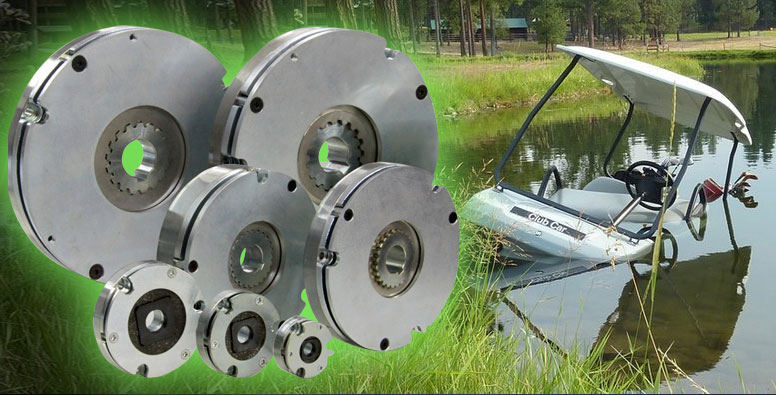Welcome Friend!

Hold Steady: E-vehicle braking solutions
Low power consumption, thin profile, reliability and safety are the key factors in choosing your parking brakes.
Back in the day, when you drove a vehicle or golf cart, you had to apply a parking brake. If not, you might end up chasing the vehicle while it rolled away. Today, many electric vehicles have an automatic parking brake feature built it, so it is a bit dummy-proof as some people say. Let's just say that we're all a bit more safety conscious. E-vehicles of today are a growing market, so we can include riding mowers, atv's, lift trucks, powered wheelchairs, and really anything intended to move people or cargo from one place to another.
Another name for parking brake is power-off brake. Essentially, you remove power and the device provides brake torque. You add power and it releases the brake so the wheels can turn. Most of these brakes are spring applied brakes but some are permanent magnet type. Spring applied brakes are easily the most popular around the world and therefore the cost is also more attractive, but both have their advantages.
With single and double wheel motor drives on the rise, there are plenty of brake design styles to consider. Many of these new designs required a super thin brake profile because of limited space. They also require a brake with low power consumption. For new designs, it is best to contact Ogura early in your design process to select and optimize the overall best component for your application. This is both for cost and performance considerations.
While Ogura designs and manufacturers many specialized brakes to meet specific application requirements, there exist some standard models. The RNB series is rated up to 148 lb-ft (200Nm) static torque but other standard series such as Ogura MNB rate to 590 lb-ft (800Nm) or higher. Special considerations might include manual release mechanisms, special coil voltages, unique sizes, environmental protections, and more.
Benefits of using Ogura e-vehicle brakes:
- Safety
- Design experience
- Manufacturing capability
- Compact size and lower power requirements
- Customization and optimization
- Ability to integrate with motors or other components
